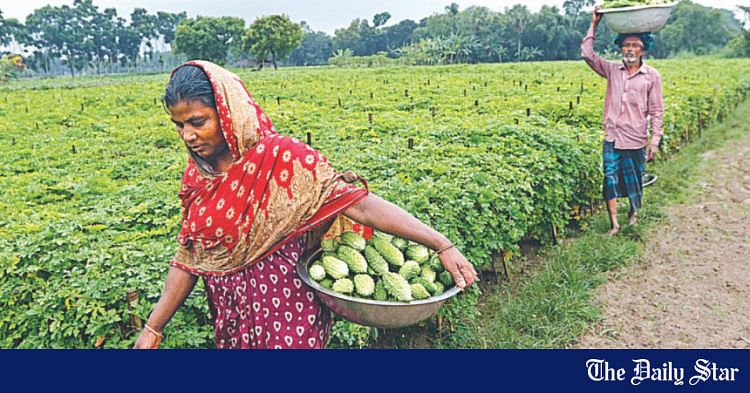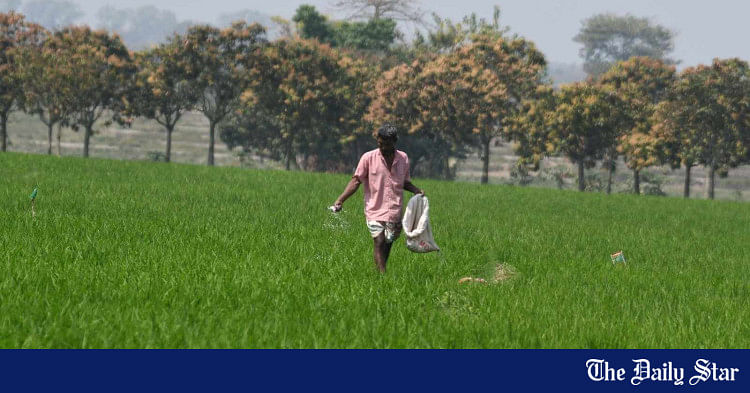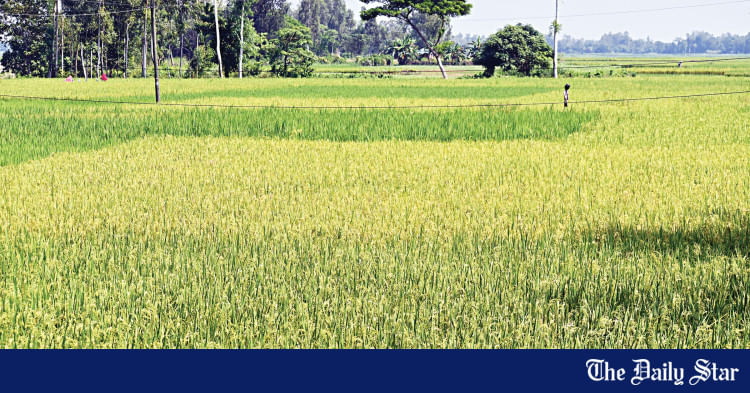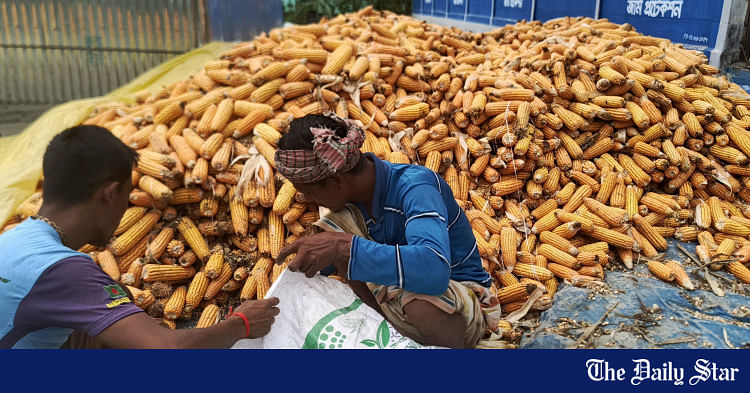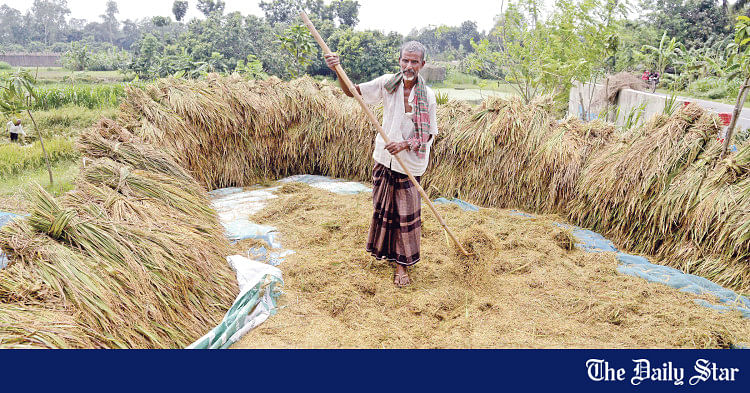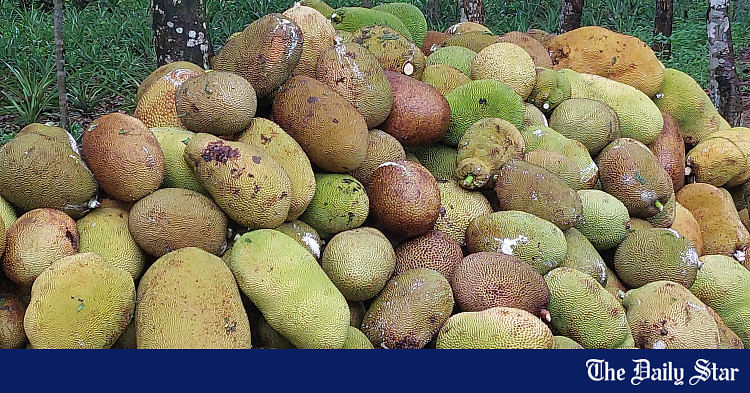- Copy to clipboard
- Thread starter
- #181
Saif
Senior Member
- Joined
- Jan 24, 2024
- Messages
- 15,397
- Reaction score
- 7,874
- Nation

- Residence

- Axis Group


Youth in agriculture
With Bangladesh set on course of achieving the Sustainable Development Goals (SDGs), the role of youth in transforming the agricultural sector could never be more critical. Agriculture, which contributes around 12.7 per cent to the country’s gross domestic product (GDP) and provides livelihoo
Youth in agriculture
A strategic imperative for sustainable future
Makhan Lal Dutta
Published :
May 24, 2025 00:20
Updated :
May 24, 2025 00:20

With Bangladesh set on course of achieving the Sustainable Development Goals (SDGs), the role of youth in transforming the agricultural sector could never be more critical. Agriculture, which contributes around 12.7 per cent to the country’s gross domestic product (GDP) and provides livelihoods for over one-third of the workforce, is at a crossroads. With an aging farming population and increasing urban migration, youth engagement in agriculture has become not only a development priority but also a strategic imperative for national resilience.
The demographic dividend and sectoral disconnect: Bangladesh boasts a youthful population, with approximately 30 per cent aged between 15 and 35. This demographic construct presents immense potential for innovation, entrepreneurship and productivity gains in agriculture. Yet, paradoxically, most young people are disengaged from farming. Agriculture is often perceived as low-income, labour-intensive and lacking in prestige particularly among educated youth. This perception, combined with structural barriers, has led to a widening generational gap in farming communities.
The average age of Bangladeshi farmers is over 50, underscoring a critical concern: Who will feed the nation in the coming decades?
Agribusiness and innovation - Changing the narrative: To reposition agriculture as a viable and attractive career path, it must be seen through the lens of enterprise and innovation. Young people are naturally drawn to technology, adaptability, and entrepreneurship — traits essential for modern agribusiness.
The rise of digital platforms such as iFarmer, Khamar-e, and Krishi Call Centres illustrates how technology can revolutionise access to inputs, market intelligence, finance, and extension services. Youth-led ventures in areas like hydroponics, vertical farming, agri-logistics, and mobile advisory services are already reshaping rural economies.
Bangladesh’s smart farming ecosystem is expanding, but it needs to be scaled and institutionalised.
Structural barriers-Addressing the gaps: Despite emerging opportunities, several persistent barriers hinder meaningful youth participation:
• Limited access to land and finance. Many aspiring young farmers lack legal land ownership and collateral—- conditions that restrict or prevent them from accessing formal credit.
• Skills mismatch.: Existing agricultural curricula often fail to equip youth with practical, entrepreneurial, and climate-resilient farming skills.
• Weak policy implementation.: While youth engagement is mentioned in national policies, translation into grassroots action remains inadequate.
• Social perception: Farming continues to be undervalued socially, which discourages educated youth from entering the sector.
Towards a youth-inclusive agricultural ecosystem: To unlock the full potential of youth in agriculture, Bangladesh must adopt a holistic and forward-looking strategy:
1. Promoting Agripreneurship. Establish dedicated start-up incubators, innovation labs, and business development services tailored to agri-based enterprises.
2. Enhancing access to finance. Introduce youth-friendly financial products, including credit guarantees, micro-insurance, and digital lending platforms.
3. Modernising education and training. Integrate digital agriculture, agribusiness management, and climate-smart practices into formal education and TVET institutions.
4. Facilitate land access. Encourage innovative land-leasing models and cooperatives to support landless rural youth.
5. Strengthen policy frameworks. Operationalise youth-centric policies at the local level through coordinated government, private sector and development partner engagement.
Catalysing green growth through youth: The youth of Bangladesh have already proved themselves as agents of change in agriculture. Whether through drone technology for pest surveillance, bio-fertiliser production, or sustainable aquaculture, they are at the forefront of a green transformation. Institutions like the Krishi Gobeshona Foundation (KGF), Bangladesh Agricultural Research Council (BARC), and agricultural universities can play a pivotal role in nurturing this momentum by investing in research, mentorship, and scale-up support for youth-led innovations.
Youth engagement in agriculture is not merely a policy option, it is a necessity for Bangladesh’s food security, rural prosperity, and economic resilience. With the right incentives, enabling environment, and investment in capacity-building, Bangladesh can cultivate a new generation of agripreneurs who will drive sustainable and inclusive growth.
If Bangladesh wants to secure the future of the food systems and rural economies, the time to invest in youth in agriculture is now.
The author is a development professional. He also serves as the Chairman and Chief Executive Officer of Harvesting Knowledge Consultancy.
A strategic imperative for sustainable future
Makhan Lal Dutta
Published :
May 24, 2025 00:20
Updated :
May 24, 2025 00:20
With Bangladesh set on course of achieving the Sustainable Development Goals (SDGs), the role of youth in transforming the agricultural sector could never be more critical. Agriculture, which contributes around 12.7 per cent to the country’s gross domestic product (GDP) and provides livelihoods for over one-third of the workforce, is at a crossroads. With an aging farming population and increasing urban migration, youth engagement in agriculture has become not only a development priority but also a strategic imperative for national resilience.
The demographic dividend and sectoral disconnect: Bangladesh boasts a youthful population, with approximately 30 per cent aged between 15 and 35. This demographic construct presents immense potential for innovation, entrepreneurship and productivity gains in agriculture. Yet, paradoxically, most young people are disengaged from farming. Agriculture is often perceived as low-income, labour-intensive and lacking in prestige particularly among educated youth. This perception, combined with structural barriers, has led to a widening generational gap in farming communities.
The average age of Bangladeshi farmers is over 50, underscoring a critical concern: Who will feed the nation in the coming decades?
Agribusiness and innovation - Changing the narrative: To reposition agriculture as a viable and attractive career path, it must be seen through the lens of enterprise and innovation. Young people are naturally drawn to technology, adaptability, and entrepreneurship — traits essential for modern agribusiness.
The rise of digital platforms such as iFarmer, Khamar-e, and Krishi Call Centres illustrates how technology can revolutionise access to inputs, market intelligence, finance, and extension services. Youth-led ventures in areas like hydroponics, vertical farming, agri-logistics, and mobile advisory services are already reshaping rural economies.
Bangladesh’s smart farming ecosystem is expanding, but it needs to be scaled and institutionalised.
Structural barriers-Addressing the gaps: Despite emerging opportunities, several persistent barriers hinder meaningful youth participation:
• Limited access to land and finance. Many aspiring young farmers lack legal land ownership and collateral—- conditions that restrict or prevent them from accessing formal credit.
• Skills mismatch.: Existing agricultural curricula often fail to equip youth with practical, entrepreneurial, and climate-resilient farming skills.
• Weak policy implementation.: While youth engagement is mentioned in national policies, translation into grassroots action remains inadequate.
• Social perception: Farming continues to be undervalued socially, which discourages educated youth from entering the sector.
Towards a youth-inclusive agricultural ecosystem: To unlock the full potential of youth in agriculture, Bangladesh must adopt a holistic and forward-looking strategy:
1. Promoting Agripreneurship. Establish dedicated start-up incubators, innovation labs, and business development services tailored to agri-based enterprises.
2. Enhancing access to finance. Introduce youth-friendly financial products, including credit guarantees, micro-insurance, and digital lending platforms.
3. Modernising education and training. Integrate digital agriculture, agribusiness management, and climate-smart practices into formal education and TVET institutions.
4. Facilitate land access. Encourage innovative land-leasing models and cooperatives to support landless rural youth.
5. Strengthen policy frameworks. Operationalise youth-centric policies at the local level through coordinated government, private sector and development partner engagement.
Catalysing green growth through youth: The youth of Bangladesh have already proved themselves as agents of change in agriculture. Whether through drone technology for pest surveillance, bio-fertiliser production, or sustainable aquaculture, they are at the forefront of a green transformation. Institutions like the Krishi Gobeshona Foundation (KGF), Bangladesh Agricultural Research Council (BARC), and agricultural universities can play a pivotal role in nurturing this momentum by investing in research, mentorship, and scale-up support for youth-led innovations.
Youth engagement in agriculture is not merely a policy option, it is a necessity for Bangladesh’s food security, rural prosperity, and economic resilience. With the right incentives, enabling environment, and investment in capacity-building, Bangladesh can cultivate a new generation of agripreneurs who will drive sustainable and inclusive growth.
If Bangladesh wants to secure the future of the food systems and rural economies, the time to invest in youth in agriculture is now.
The author is a development professional. He also serves as the Chairman and Chief Executive Officer of Harvesting Knowledge Consultancy.

